Botrypus virginianus
Botrypus virginianus rattlesnake fern
Add to MyPlants View Locations
The leaf of this fern has a softer texture than that of its relatives. The plant consists of a single fertile and sterile frond, the two fronds join below the bottom pinnae of the sterile leafy frond. The fertile frond bears a panicle of spores. Traditionally, Native Americans used this fern to treat snake bites.
Habitat & Range
Grows in rich, moist, or dry woodlands, and wet thickets on subacidic soil, mostly in shade.
Ranging in all parts of North America other than the desert southwest.
Wetland Code: FACU
Phenology
Can persist into autumn, but does not overwinter.
Characteristics
Sterile blade up to 12 in long. Triangular, divided, and subdivided into pinnules that are variable but are distinctly lacy-cut. Of thin texture, bright green. Reflexed to almost horizontal.
Pinnae narrow, cut into pinnules that are toothed, lobed, or cut, with semi blunt tips. Up to 12 pairs produced on large plants. Variable in shape and dependent on light. Veins are few and simple.
Stipe up to 8 in, erect, smooth, fleshy, round, pink at the base.
Sporophore/fertile blade six or more tapering, spreading to ascending branches at the top of a thin stalk. Overtops the sterile blade. Sporangia start out green and become golden-yellow when mature. Withers soon after early summer.
Plant Codes
S-rank: S5 (Secure)
G-rank: G5 (Secure)
Botrypus virginianus rattlesnake fern
Synonyms: Botrychium virginianumAdd to MyPlants View Locations
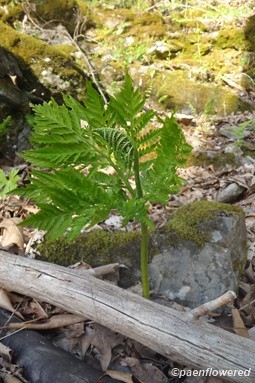
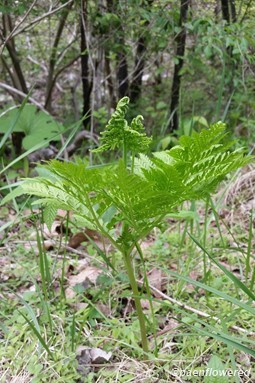



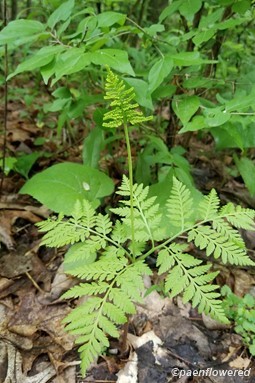

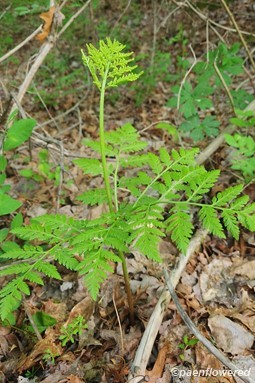

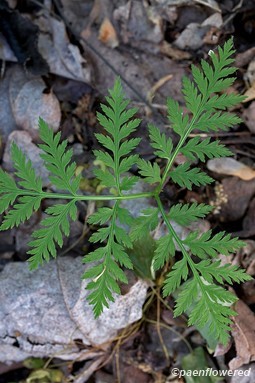

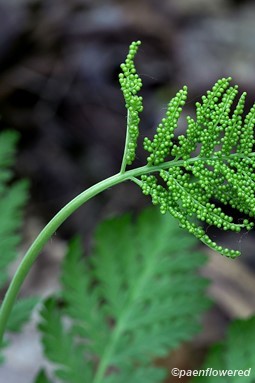
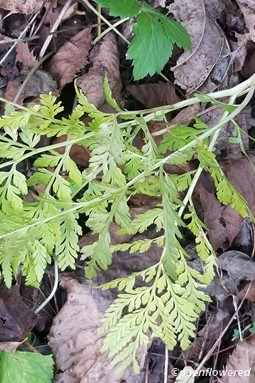

Comments
Have you spotted this plant in your area? We'd love to hear about your experience! Share your comments or questions about the plant below. Comments are moderated before posting.